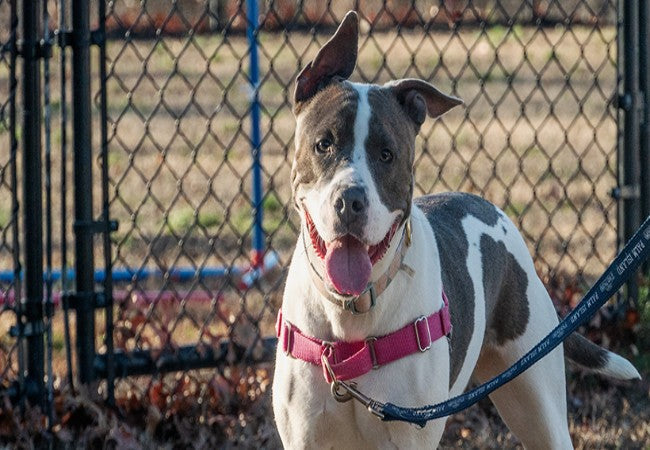A Vet’s Guide to Barrier Frustration in Dogs: Causes, Training & Calming (2025) 🚧🐶

In this article
A Vet’s Guide to Barrier Frustration in Dogs: Causes, Training & Calming (2025) 🚧🐶
By Dr. Duncan Houston BVSc
Hello—I’m Dr Duncan Houston BVSc, veterinarian and Ask A Vet founder. If your dog becomes loud, lunges, or is destructive behind fences, gates, doors, or leashes, you’re witnessing barrier frustration. In this vet approved guide, we’ll explore:
- 🔍 What barrier frustration is and why it happens
- ⚠️ Common triggers and emotional drivers (fear, excitement, territoriality)
- 🛠️ Proven training methods: desensitization & counterconditioning
- 🔧 Management strategies to prevent rehearsal
1. What Is Barrier Frustration?
Barrier frustration (or reactivity) occurs when a dog sees something they want—or fear—on the other side of a barrier like a fence, window, leash, or crate. The dog can’t reach the stimulus, leading to agitation, barking, lunging, or even redirected aggression.
2. What Causes It?
- Lack of socialization: Dogs not properly exposed to people, animals, or environments often overreact when they encounter them.
- Territorial behavior: Barrier frustration can feel like the dog is “guarding”—fences reinforce a sense of boundary.
- Frustration from inability to interact: Dogs prevented from greeting others may escalate into barking or lunging.
- Fear/anxiety: When scared, dogs behind barriers may bark or lunge because escape is blocked.
- Boredom & pent-up energy: Dogs without outlets for play or mental enrichment rehearse barrier behaviors as a release.
3. Why It Matters
Unchecked barrier frustration can worsen over time—leading to increased stress, desensitization to stimuli, redirected aggression (even towards owners), physical damage to barriers, or injury during lunging.
4. Management Strategies
- Block triggers: Use window film, opaque fencing, garden netting, or blinds to limit visual access.
- Leash during yard time: Walk and supervise especially during peak traffic times.
- Create calm routines: Engage dogs in enrichment before exposure to known triggers—short walks, puzzles, chew toys.
- Designate safe zones: Areas with no view of the outside world can help dogs decompress and feel secure.
5. Training Techniques
5.1 Desensitization & Counterconditioning
- Identify the threshold distance where the dog notices but doesn't react.
- At that distance, pair the stimulus with high-value treats and praise consistently.
- Stay below threshold—if the dog reacts, increase distance and calm them before restarting.
- Gradually decrease distance over multiple short (1–3 min) exposures.
- Repeat for each trigger: dogs, passersby, mail carriers, bikes.
5.2 Training an Alternate Behavior
- Teach a replacement behavior on cue—“look,” “go to mat,” or “leave it”—so dog learns a calm response.
- Practice default behaviors away from triggers first, then associate them with barrier situations.
5.3 Leash Training Strategy
- Use long-line and treats; call dog to you before a reaction, reward for compliance.
- Mark and reward focus or calm behavior as the trigger appears.
6. Tools to Help Calm and Support
- Ask A Vet Telehealth: Send video of barrier behavior and work with a vet-behavior specialist to build a training plan.
7. Real Vet Case Study
Case: “Riley,” 4‑year‑old Shepherd mix
Riley barked and lunged at dogs through the yard fence. We covered the fence and practiced threshold desensitization: from a distance where she’d notice other dogs, each sighting was paired with high-value treats. Over weeks, Riley began focusing on our recall cue (“come”) instead of barking. Ask A Vet followed via video—within one month, Riley relaxed calmly during neighbor dog walks.
8. FAQs
-
How long does it take?
Timelines vary, but consistent short sessions over 4–8 weeks are typical for noticeable reduction. -
Can medication help?
In severe cases, anti-anxiety meds or pheromone collars may assist in combination with training. -
Will it ever fully go away?
Progress depends on consistency—many dogs settle significantly, though life-long maintenance may be needed. -
What if I don’t have time?
Management is key—invisible barriers and safe zones help minimize rehearsal until training begins.
📌 Final Thoughts from a Vet
Barrier frustration is common—but when properly managed and trained using desensitization and alternative behaviors, you can significantly reduce your dog's reactivity. Combine thoughtful environmental adjustments with short, consistent training sessions and enrichment strategies and use Ask A Vet remote guidance for support. With patience and planning, you’ll help your dog live calmer, more confident days—behind any barrier. 🐾❤️






